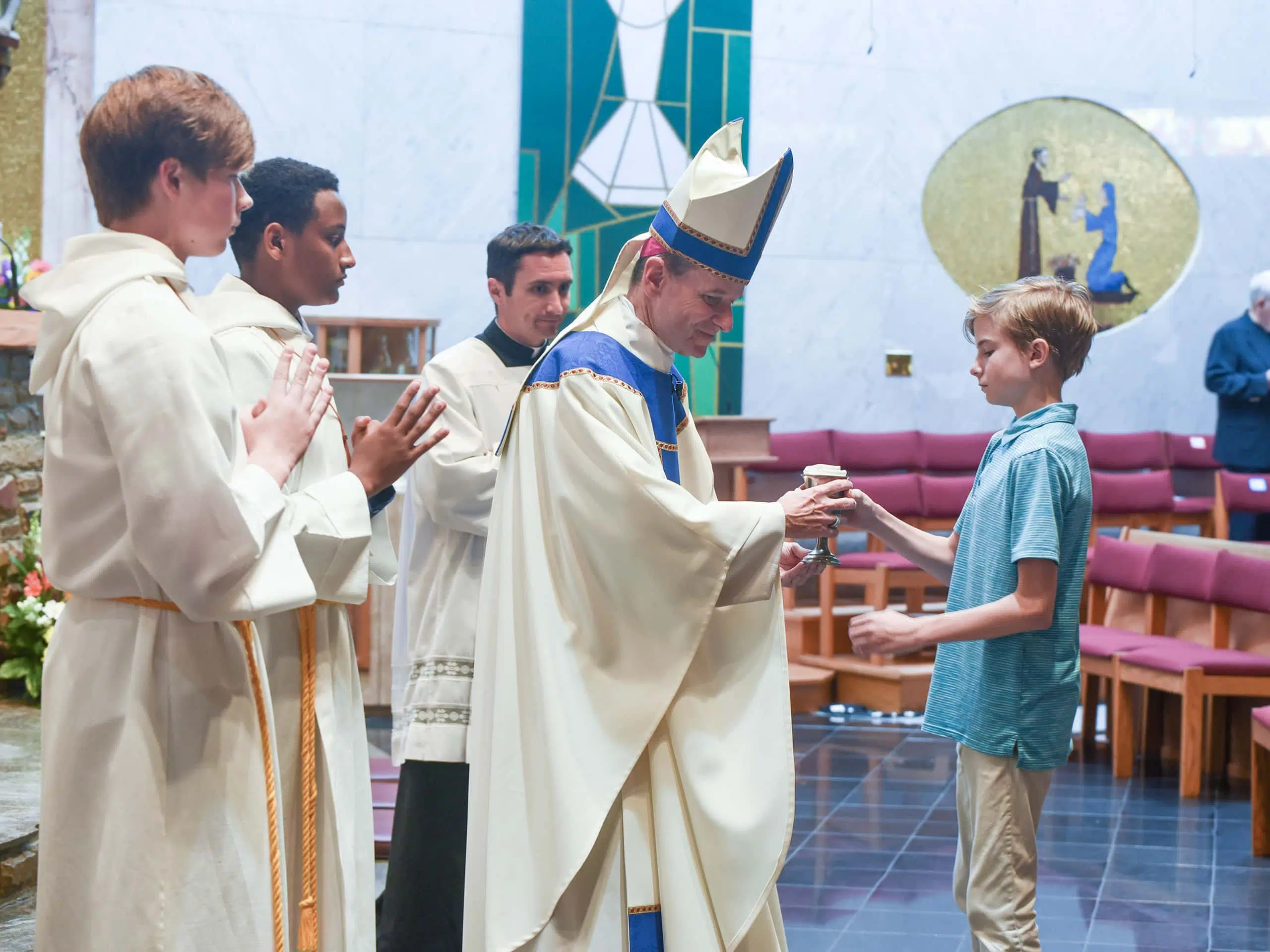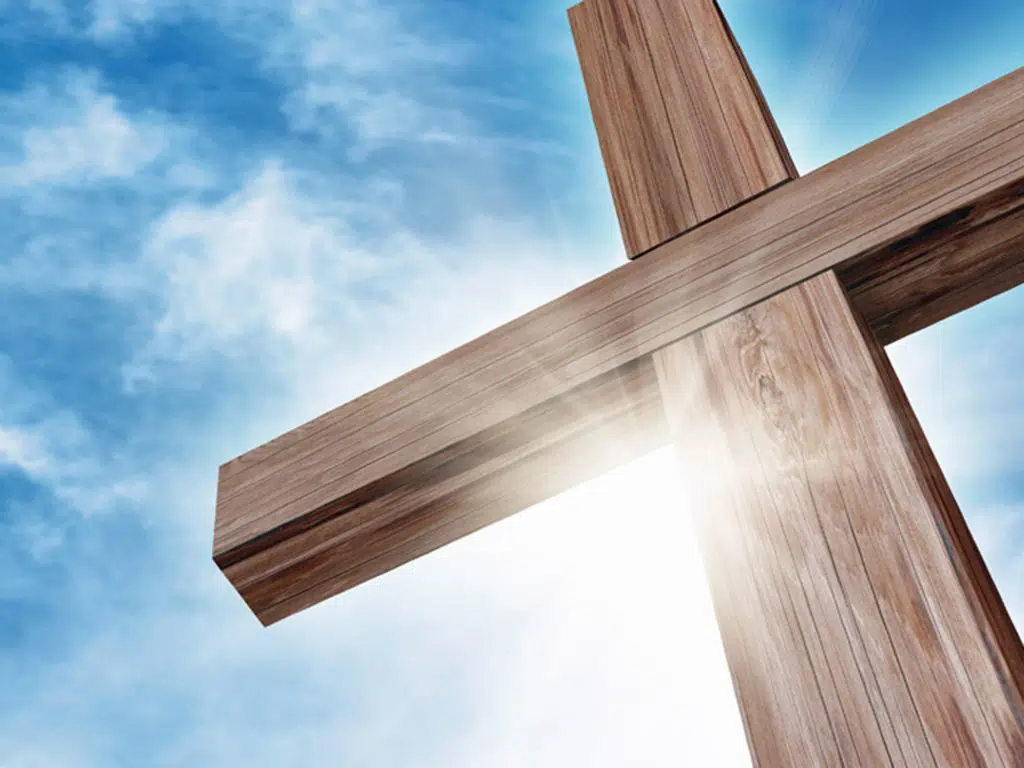At the diocesan anniversary Mass this August, I had the pleasure of meeting Bishop Loverde. I am embarrassed to say that I was not sure how to address him — just Bishop, your eminence, or what. I know the Pope is called “Holy Father.” Why don’t you write something about how we address church officials.” A reader in Vienna
A proper etiquette does exist for how we address our Church leaders. As a point of courtesy, all Catholics should be familiar with these forms of address. Even though we may live in an increasingly informal world, such good formalities help to make us respectful of proper authority. So lets start at the top the Pope.
A person would greet Pope John Paul II as “Your Holiness,” “Most Holy Father,” or “Holy Father.” A letter written to him would be addressed, “His Holiness, Pope John Paul II,” with the salutation, “Your Holiness” or “Most Holy Father.”
Next in the hierarchy comes the Cardinal. A person would greet a Cardinal, for instance Cardinal Keeler of Baltimore, by saying, “Your Eminence” or “Your Lordship” (which is very British). In addressing a letter to Cardinal Keeler, one would write, “His Eminence, William Cardinal Keeler, Archbishop of Baltimore” with the salutation, “Your Eminence,” “Most Eminent Cardinal,” or “My Lord Cardinal.” Lately, some people will reverse the word order, saying, “Cardinal William Keeler” instead of “William Cardinal Keeler.” The formal word order originated in the time when last names were not common, but individuals were known by occupations or even places. For example, “John, the Smith” (or Blacksmith) eventually became “John Smith.” The same evolution occurred with Cardinals: What would have been “William, the Cardinal” would now be, with the use of family names, “William Cardinal Keeler.”
Another interesting diversion for us concerns a Patriarch. Patriarchs are Cardinals but have honorary precedence over a Cardinal. For example, the Patriarch of Jerusalem is Archbishop Michael Sabbah. A person would greet him, saying, “Your Beatitude.” In addressing a letter to him, one would write, “His Beatitude, Michael Sabbah, The Patriarch of Jerusalem” with the salutation, “Your Beatitude.”
Both an Archbishop and a Bishop would be greeted as “Your Excellency” or “Your Grace” (again very British). For example, one would greet Bishop Loverde as “Your Excellency.” In writing to him (for instance, about how much you enjoy this column only kidding), you would address the letter, “The Most Reverend Paul S. Loverde, Bishop of Arlington,” with the salutation, “Your Excellency.” Although some people today informally would approach Bishop Loverde and say, for instance, “Bishop, how are you?” one should properly say, “Bishop Loverde, how are you?” or “Your Excellency, how are you?” Just as a person would never approach Pope John Paul II and simply say, “Pope, how are you?” the title of office, in this case “bishop,” should not be used in an address without either the definite article the or a proper name.
A Monsignor would be greeted as “Monsignor.” A letter to Monsignor Bradican, for example, would be addressed as “Reverend Monsignor Thomas Bradican,” or “Reverend and Dear Monsignor,” with the salutation, “Dear Monsignor.” (The proper abbreviation is “Rev. Msgr.”) Prior to the reforms of the Second Vatican Council, some Monsignori had the distinction of “Right Reverend Monsignor” or “Very Reverend Monsignor.” Such distinctions are no longer made among Monsignori except for certain members of the Papal Household and those who serve in special offices of the Vatican Curia.
Finally, we come to the Priest. He would be greeted simply as “Father,” which reflects his spiritual fatherhood to those entrusted to his care by virtue of the Sacrament of Holy Orders. A letter to him would be addressed, “The Reverend William P. Saunders,” for example, with the salutation, “Dear Father Saunders” or “Reverend and Dear Father Saunders.” Some “Fathers” are also formally addressed “Very Reverend” when they have a special duty; for example, Father Frank Ready, the Dean of Deanery II, would be addressed, “The Very Reverend Frank Ready.”
While this review is not exhaustive of all of the Church offices, the major ones have been considered. Further information may be found in the Official Directory for the Diocese of Arlington and The Church Visible by James Charles Noonan, Jr.
Fr. Saunders is dean of the Notre Dame Graduate School of Christendom College and pastor of Queen of Apostles Parish, both in Alexandria.



Pentecost Sunday